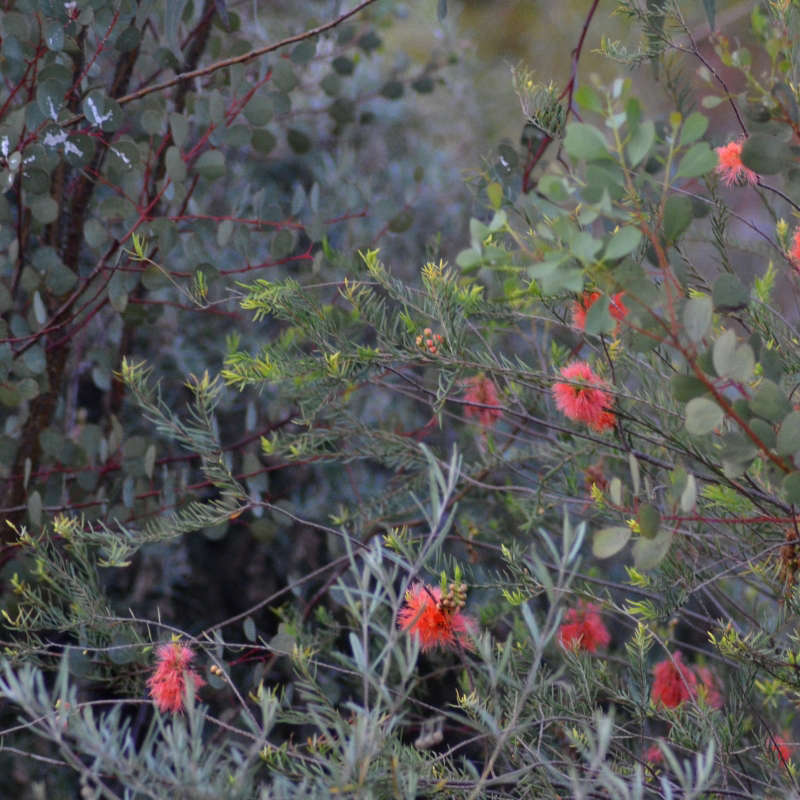

Grevillea trees and shrubs are evergreen, deer-resistant, and fuss-free choices for privacy screen, specimen plants, and ground covers (depending on the species) and will be happy in warm temperate gardens that remind them of their native Australian climate.
Grevillea shrubs and trees have feathery, Seussian silhouettes that add texture and movement to a landscape. With more than 360 species that range from low-growers to trees, these evergreen flowering plants are versatile additions to gardens in temperate climates.
Species with dense growth habits, such as lavender grevillea (Grevillea lavandulacea), make useful privacy screens. Woolly grevillea (Grevillea lanigera ‘Mt Tamboritha’) is a handsome gray ground cover. With a mature height of up to 15 feet, Grevillea ‘Honey Gem’ can be used as a small specimen tree.
“Native to open lands in Australia mainly, a land that is massive and environmentally diverse, grevilleas have evolved to adapt to a wide range of conditions, from desert to high mountain zones,” writes our contributor Kier Holmes. “And most grevilleas are woody shrubs with fine needles or intricately dissected sturdy leaves (not soft and tender little perennials), likely an adaptation to drought and unkind soil.” Read more in Gardening 101: Grevilleas.
Amenable to pruning, scrubby grevillea shrubs can be coaxed into bushier shapes. (Tired-looking ground cover varieties are best pulled out and replaced.)
v5.0
When you register as a free Member of the Remodelista family of websites (Remodelista, Gardenista, and The Organized Home), you gain access to all current posts plus 10 archived posts per month, our internal bookmarking tool, and the community bulletin board.
Member benefits include:
For $5/month ($59.99 paid annually) you'll enjoy unlimited, ad-free access to Remodelista, Gardenista, and The Organized Home and all the benefits of Membership.
Subscriber benefits include:
For $5/month ($59.99 paid annually) you'll enjoy unlimited, ad-free access to Remodelista, Gardenista, and The Organized Home and all the benefits of Membership.
Subscriber benefits include:
Benefits include:
For $5/month ($59.99 paid annually) you'll enjoy unlimited, ad-free access to Remodelista, Gardenista, and The Organized Home and all the benefits of Membership.
Subscriber benefits include:
When you register as a free Member of the Remodelista family of websites (Remodelista, Gardenista, and The Organized Home), you gain access to all current posts plus 10 archived posts per month, our internal bookmarking tool, and the community bulletin board.
Member benefits include:
If at any time you want to become a Subscriber and enjoy unlimited, ad-free access to all our content, just go to the My Account link and choose Subscribe.
Advertising funds our work at Gardenista and helps us provide you with a daily dose of garden inspiration & design. We hope you’ll consider disabling your adblocker for Gardenista so we can continue our mission: a well-designed garden for all.
Thank you for your support.